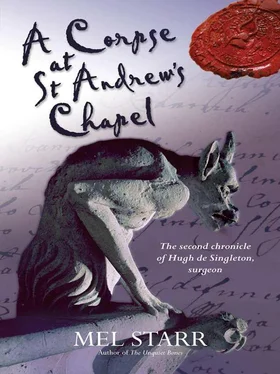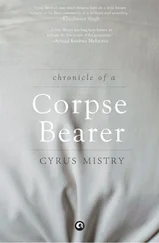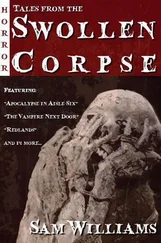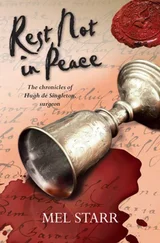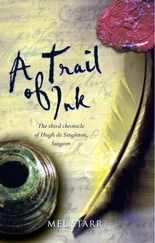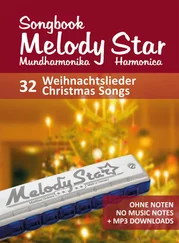Mel Starr - A Corpse at St Andrew's Chapel
Здесь есть возможность читать онлайн «Mel Starr - A Corpse at St Andrew's Chapel» весь текст электронной книги совершенно бесплатно (целиком полную версию без сокращений). В некоторых случаях можно слушать аудио, скачать через торрент в формате fb2 и присутствует краткое содержание. Год выпуска: 2010, Издательство: Kregel Publications, Жанр: Исторический детектив, на английском языке. Описание произведения, (предисловие) а так же отзывы посетителей доступны на портале библиотеки ЛибКат.
- Название:A Corpse at St Andrew's Chapel
- Автор:
- Издательство:Kregel Publications
- Жанр:
- Год:2010
- ISBN:нет данных
- Рейтинг книги:5 / 5. Голосов: 1
-
Избранное:Добавить в избранное
- Отзывы:
-
Ваша оценка:
- 100
- 1
- 2
- 3
- 4
- 5
A Corpse at St Andrew's Chapel: краткое содержание, описание и аннотация
Предлагаем к чтению аннотацию, описание, краткое содержание или предисловие (зависит от того, что написал сам автор книги «A Corpse at St Andrew's Chapel»). Если вы не нашли необходимую информацию о книге — напишите в комментариях, мы постараемся отыскать её.
A Corpse at St Andrew's Chapel — читать онлайн бесплатно полную книгу (весь текст) целиком
Ниже представлен текст книги, разбитый по страницам. Система сохранения места последней прочитанной страницы, позволяет с удобством читать онлайн бесплатно книгу «A Corpse at St Andrew's Chapel», без необходимости каждый раз заново искать на чём Вы остановились. Поставьте закладку, и сможете в любой момент перейти на страницу, на которой закончили чтение.
Интервал:
Закладка:
I pulled the priest to his feet and, together with Simon Osbern, I cleaned his robe of debris.
“We should,” I advised, “be more prudent in our search. Let us return to the road and spread ourselves a few paces apart, then re-enter the forest at a more careful pace.”
The others agreed, having no better plan. Our company covered a space perhaps thirty paces in breadth, and we had gone but a few steps beyond the vine which snared Father Thomas when a clerk called out in a high-pitched yelp.
The urgency in his voice drew us scrambling to him. He stood near a tall beech, and as we gathered about him he pointed to the leaves at his feet. There, nearly obscured in rotting vegetation, lay a shoe. The sole was of wood, and the leather which would bind it to a man’s foot was new and little worn. It was much like the shoes I had seen on the feet of Henry atte Bridge. Of course, it was much like the shoes on the feet of any man who could afford to go shod of a spring day.
Because the beech tree was not yet in leaf a pattern of dappled sunlight penetrated the naked branches and left bright patterns on the forest floor. The partly visible shoe lay in one of these illuminated places, else its colors would have blended with the leaves so that, had it been in shadow, it might have gone undetected.
We stood in a circle and stared at the shoe as if it came from the foot of a leper. No other made a move to retrieve it, so I did. There was nothing to be gained from inspecting the shoe. As I have said, it was much like others worn by the commons. Father Thomas broke the silence.
“A man making his way in haste through a dark wood might lose a shoe.” He peered unblinking at me as he spoke.
“Had he reason enough for haste, he might not wish to turn and seek a lost shoe in the dark, when ’twould not be easy to recover,” I replied.
“The shoe points deeper into the grove,” I continued. “Let us resume our places and see what else may be found.”
We did not go far before the issue was resolved. It was Simon Osbern who made the discovery. A man lay face down in the mould. His arms were thrown forward and extended above his head, with palms flat upon the forest floor. He wore but one shoe, and his chauces and cotehardie were stained with mud. Above the bare limbs of the forest the buzzards circled silently on broad wings. We crossed ourselves.
I knew who this must be before we turned him to his back. My conjecture was correct, for when we rolled him over it was the face of Henry atte Bridge which stared unseeing at the buzzards.
The vicars and clerks lifted their eyes to me. I felt my cheeks flush, for I was sure this death was my doing, even though I could plead self-defense. Only Father Thomas knew of my struggle with the dead man, but in my guilt I felt all must suspect.
Thomas de Bowlegh broke the silence. “What has caused this death, Master Hugh?”
Without a close inspection of the corpse I could not tell, and told him so. I could see no wound or other mark likely to bring death to one so young and strong. The injury must be, I thought, internal and invisible; a blow to the neck, or perhaps the kick of a horse.
“We must raise the hue and cry,” said Father Simon, “and Hubert Shillside must gather a jury and bring them to this place.”
That was done, and before the ninth hour Shillside and his coroner’s jury stood about the corpse. The coroner bent to examine the dead man more closely. I thought he gave special attention to the neck, but perhaps this was my imagination. Shillside stood and turned to me.
“Master Hugh, have you examined this man?”
“No. We awaited your arrival.”
Shillside scratched his head. “I find nothing amiss. He was gathering wood, you say?”
“’Tis what he told his wife,” Father Thomas replied.
The coroner peered about into the lengthening shadows. “I see no bundle hereabouts…and why is he so muddied? A man would not be so filthy from falling headlong into last year’s leaves.”
Muttered agreement followed this assertion.
“How did you find him?” Shillside asked.
“Face down,” I said. “Arms outstretched.”
“As if he was struck down while running,” one of the clerks added.
“Then let’s turn him and see what may be invisible to us now.”
Henry atte Bridge was rolled face down again, and I placed his stiffened arms above his head as they were when we discovered him. The coroner knelt beside the body and motioned for me to join him on my knees on the forest floor.
“I see no cause for death. There is much about this I do not like,” Shillside said softly as we examined Henry’s broad back.
These words were barely spoken when I saw, as I scrutinized the prone form, a mark on atte Bridge’s back which caught my attention. This had escaped me when I first saw the corpse, for the man’s cotehardie was old, frayed, torn in many places, and stained with age and mud.
I touched the edges of a small tear in the cotehardie. This break in the fabric seemed clean, unlike other rips, the fringes of which were raveled and uneven. I brushed dirt from this opening and saw, obscured by soil and debris, a dim russet oval, a nearly invisible stain against the weathered brown of the garment.
Shillside saw my interest and bent to examine the torn fabric. “What have you found?” he asked.
“Perhaps nothing,” I replied, but as I spoke I pulled up the hem of the cotehardie and reached a hand under the kirtle and across the dead man’s back. I felt there what I suspected. When I withdrew my hand the fingertips were dark with congealed, drying blood.
“He has been stabbed,” Father Thomas said softly.
“I fear so,” I agreed. Had the vicar not suggested a cause of death I might have been more thorough in my examination. If a similar matter should arise in the future I must not allow others to plant suggestions in my mind, for I am too willing to allow them to take root.
I turned the body onto its back again, and with the aid of a clerk I stripped off the cotehardie and kirtle. We turned the hairy fellow to his stomach once again, and the wound was plain.
There had been little bleeding. I believe this was so because the injury penetrated to the lungs and heart, and so atte Bridge died quickly. The blade which struck him down was not large. The wound in his back was the size of my little finger. Perhaps this limited the flow of blood. The wound was just to the left of the man’s spine. Perhaps he tried to run from this attack, but his hurt was too great and he fell headlong where we found him.
The clerks found several fallen branches, broke them to appropriate lengths, and created a litter upon which we transported the body from the wood. Worshippers had gathered before the porch of St Beornwald’s Church, awaiting evensong. They watched in open-mouthed silence as our company passed. Simon Osbern and two of the clerks left us at the gate to the churchyard, and several members of the coroner’s jury, their duty completed for the moment, dropped away as we made our way down Church View Street and turned on to Bridge Street.
As our somber cortege approached the bridge over Shill Brook I remembered the shoe I still carried. Its mate was yet fixed to the left foot of the corpse, bobbing in step with the rhythm of those who carried Henry atte Bridge home. I increased my pace, stepped behind the corpse, and slipped the other shoe from the cold, pale foot. Hubert Shillside walked beside me and watched me do this, but said nothing.
The six men who carried Henry atte Bridge home deposited their burden at the door of his hut in the Weald. Our approach was silent. None of the inhabitants heard us draw near and no face appeared at the door, which was open to the warm spring afternoon. To be truthful, I felt a chill as I stood in the shadow formed by the house as the sun sank low in the western sky. Father Thomas rapped on the doorpost. The knock brought a pale, frowning woman to the door.
Читать дальшеИнтервал:
Закладка:
Похожие книги на «A Corpse at St Andrew's Chapel»
Представляем Вашему вниманию похожие книги на «A Corpse at St Andrew's Chapel» списком для выбора. Мы отобрали схожую по названию и смыслу литературу в надежде предоставить читателям больше вариантов отыскать новые, интересные, ещё непрочитанные произведения.
Обсуждение, отзывы о книге «A Corpse at St Andrew's Chapel» и просто собственные мнения читателей. Оставьте ваши комментарии, напишите, что Вы думаете о произведении, его смысле или главных героях. Укажите что конкретно понравилось, а что нет, и почему Вы так считаете.
